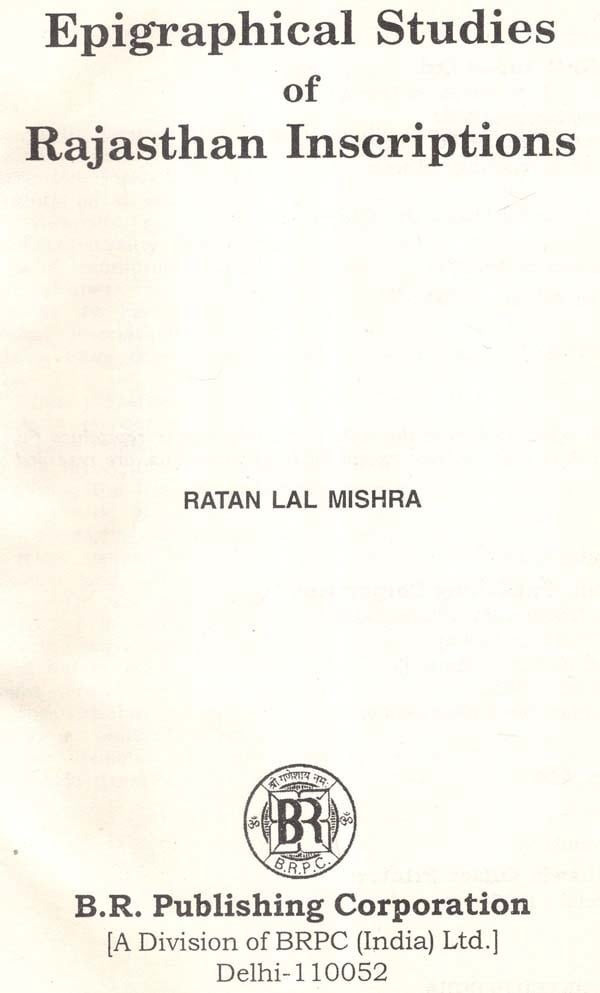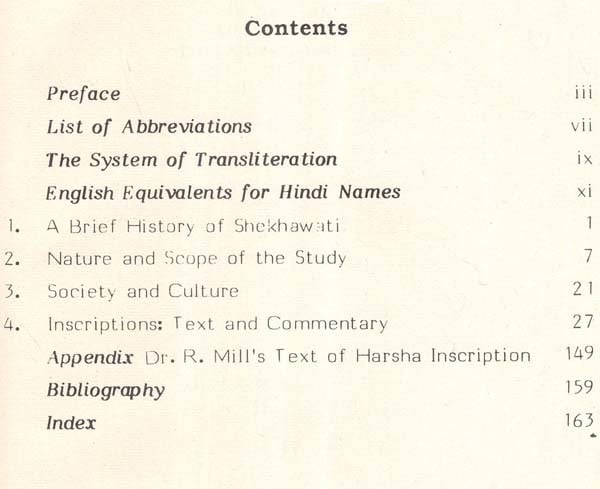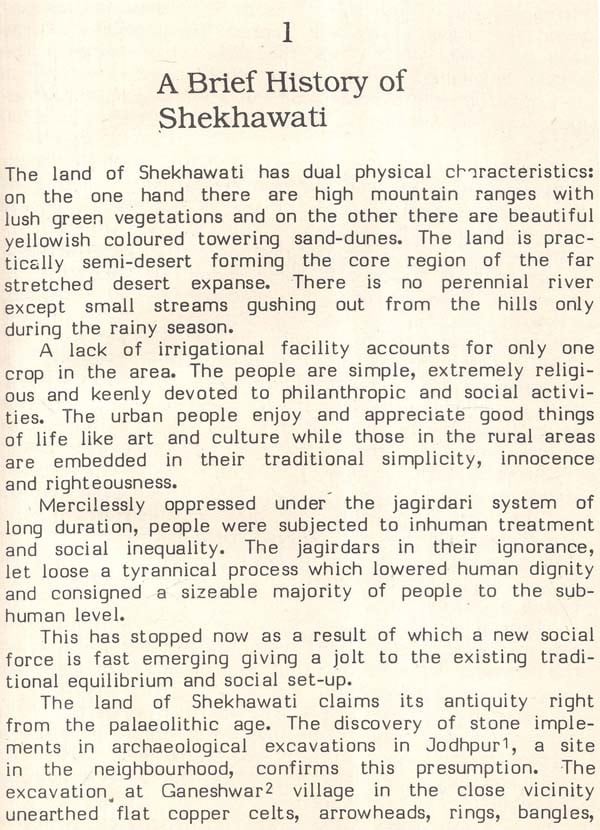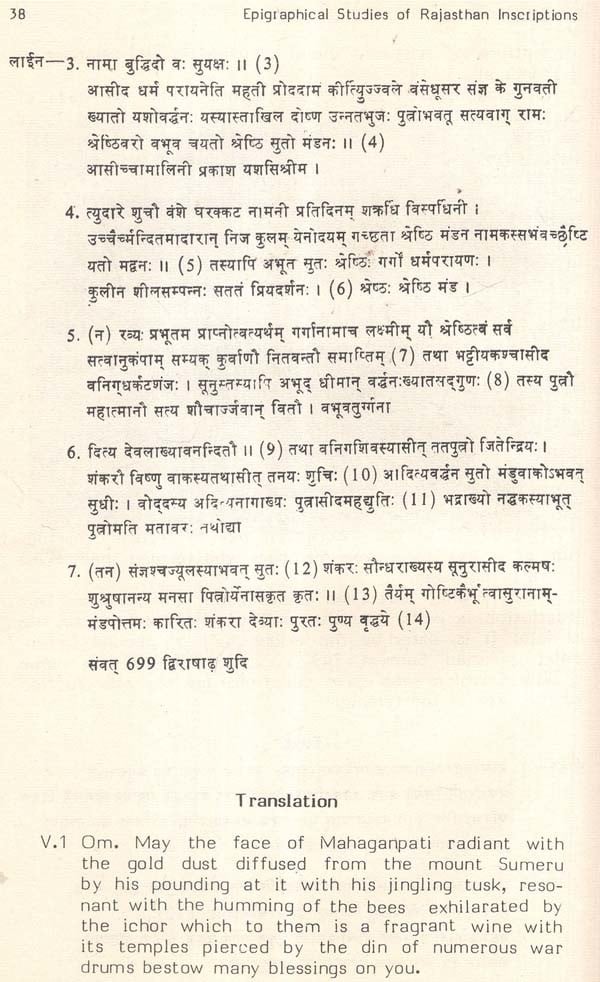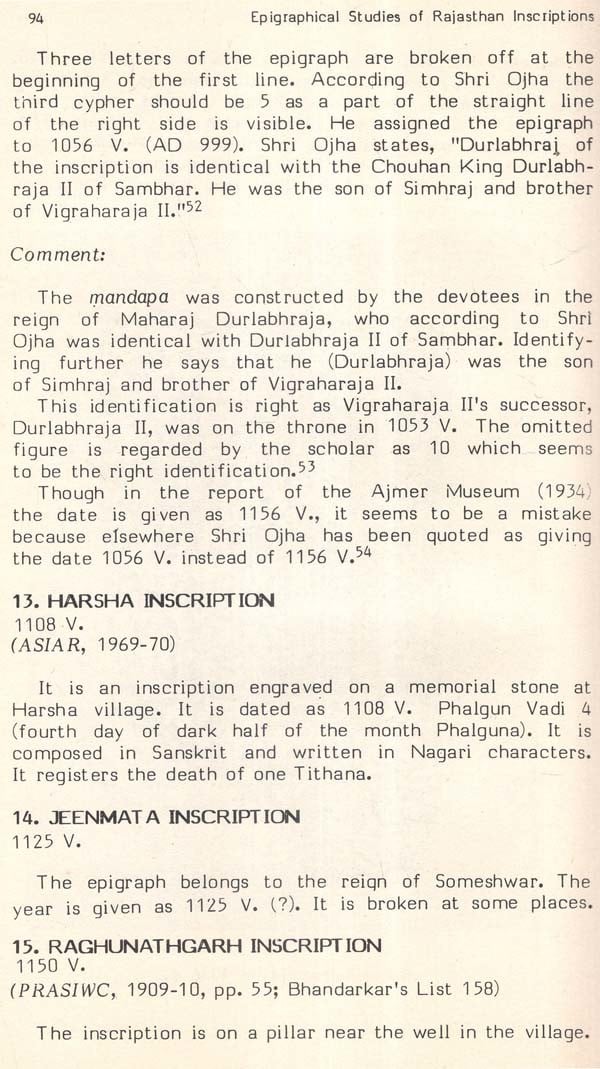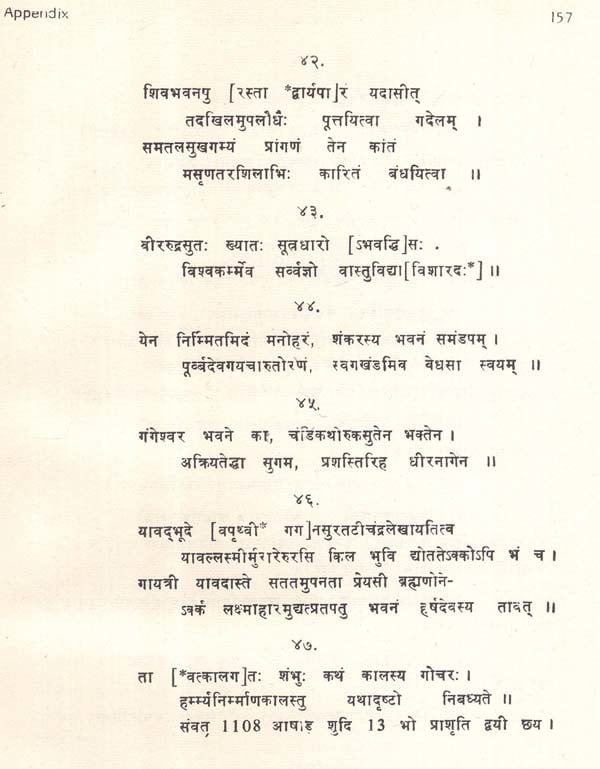
Epigraphical Studies of Rajasthan Inscriptions (An Old and Rare Book)
Book Specification
| Item Code: | AZE520 |
| Author: | Ratan Lal Mishra |
| Publisher: | B.R. Publishing Corporation |
| Language: | ENGLISH |
| Edition: | 2003 |
| ISBN: | 9788176463362 |
| Pages: | 182 |
| Cover: | HARDCOVER |
| Other Details | 9.00x6.00 |
| Weight | 350 gm |
Book Description
The extensive use of Sanskrit in these inscriptions continued upto the first quarter of the thirteenth century after which the local dialect of the Rajasthani language was used in the inscriptions However, a touch of corrupt Sanskrit still remained in the inscriptions especially in the imprecatory stanzas. Most of the inscriptions are believed to have been engraved on behalf of individuals to mark their philanthropic or other achievements in the social field.
The details of the inscriptions given in this book Epigraphical Studies of Rajasthan Inscriptions include the text of Sanskrit, its translation verse by verse, comments of various well-known epigraphers on the decipherment and translation of the text, and the author's own observations based on orthographical and paleographical considerations. In some cases, photographs of the inscriptions are also given. The wide range of inscriptions covered in the book is fascinating indeed.
He served as Deputy Director in the Public Relations Department, Government of Rajasthan. He is a prolific writer having more than 30 books to his credit and is keenly devoted to the study of art and architecture. The forts and fortification, cenotaphs, tombs and temples of the country in general and Rajasthan in particular have been a source of great inspiration to him. His special subjects of study are history and archaeology.
Presently, he is engaged epigraphically study of Rajasthan.
During the last decade I have been engaged primarily in the work of discovering, collecting and deciphering the epigraphs which provided interesting information on many topics. The village folks watched this exercise curiously and sometimes disconcertedly when they saw a stranger scanning either a mutilated crusted stone slab lying in a dark corner or noting down something from the withered wall of their old temple. As a result of consistent effort, in this way a good number of epigraphs were collected and analyzed.
**Contents and Sample Pages**
